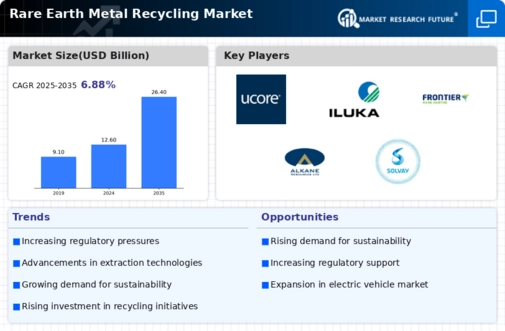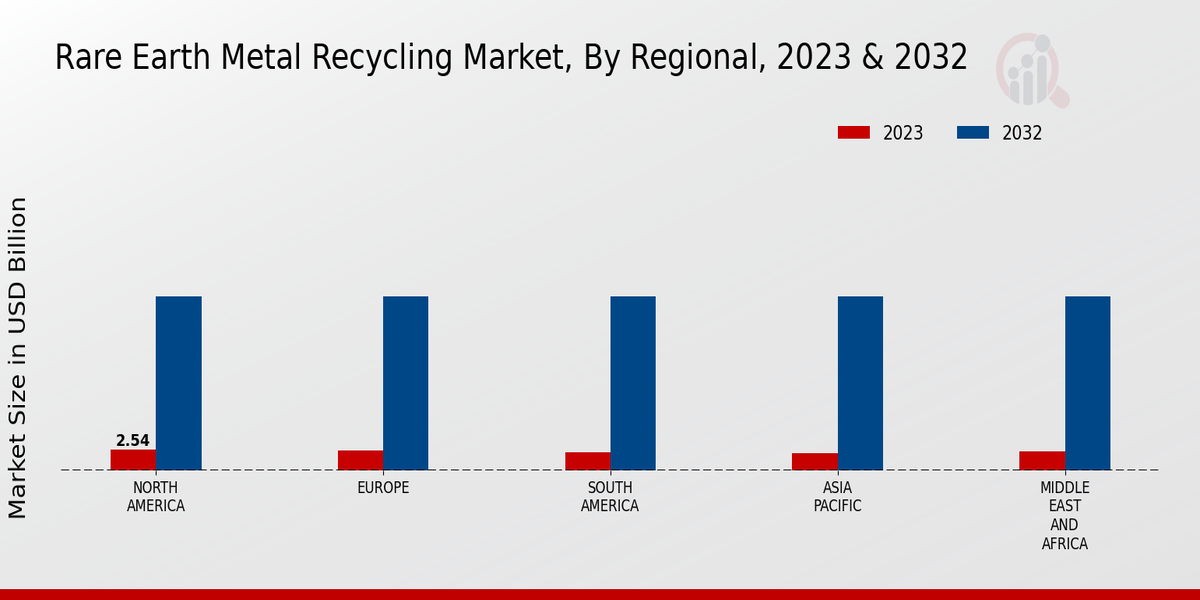Market Growth Projections
Global Supply Chain Challenges
The Global Rare Earth Metal Recycling Market Industry is also shaped by ongoing global supply chain challenges. Disruptions in the supply of rare earth metals, often due to geopolitical tensions or trade restrictions, have heightened the need for recycling as a reliable alternative source. Companies are increasingly turning to recycled materials to mitigate risks associated with supply shortages. This trend is likely to bolster the market, as businesses recognize the strategic importance of securing a stable supply of rare earth metals through recycling. The anticipated growth trajectory, from 12.6 USD Billion in 2024 to 26.4 USD Billion by 2035, reflects the industry's adaptation to these supply chain dynamics.
Increasing Demand for Electronics
The Global Rare Earth Metal Recycling Market Industry is driven by the escalating demand for electronic devices, which utilize rare earth metals in their manufacturing. As consumer electronics continue to proliferate, the need for sustainable recycling practices becomes paramount. In 2024, the market is projected to reach 12.6 USD Billion, reflecting a growing awareness of resource conservation. Companies are increasingly focusing on recycling rare earth metals from discarded electronics, thereby reducing the environmental impact associated with mining. This trend not only supports the circular economy but also ensures a steady supply of these critical materials, which are essential for the production of high-tech devices.
Government Regulations and Policies
The Global Rare Earth Metal Recycling Market Industry is significantly influenced by stringent government regulations aimed at promoting recycling and reducing waste. Various countries are implementing policies that encourage the recycling of rare earth metals, thereby fostering a more sustainable approach to resource management. For instance, regulations that mandate recycling targets for electronic waste are becoming more common. These initiatives not only help in conserving natural resources but also stimulate market growth, as companies seek to comply with these regulations. The anticipated growth from 12.6 USD Billion in 2024 to 26.4 USD Billion by 2035 underscores the impact of these regulatory frameworks on the recycling sector.
Rising Awareness of Environmental Sustainability
The Global Rare Earth Metal Recycling Market Industry is experiencing growth due to an increasing global awareness of environmental sustainability. Consumers and businesses alike are becoming more conscious of the ecological impact of mining and the importance of recycling rare earth metals. This shift in mindset is driving demand for recycled materials, as stakeholders seek to minimize their carbon footprint. Companies that prioritize sustainable practices are likely to gain a competitive edge in the market. The projected growth from 12.6 USD Billion in 2024 to 26.4 USD Billion by 2035 indicates a robust response to this rising awareness, as more entities invest in recycling initiatives.
Technological Advancements in Recycling Processes
Technological innovations play a crucial role in the Global Rare Earth Metal Recycling Market Industry, enhancing the efficiency and effectiveness of recycling processes. Advanced techniques such as hydrometallurgy and pyrometallurgy are being developed to recover rare earth metals from various waste streams. These technologies not only improve recovery rates but also reduce the environmental footprint of recycling operations. As the market evolves, the integration of automation and artificial intelligence into recycling facilities is likely to streamline operations further. This technological evolution is expected to contribute to a compound annual growth rate of 6.97% from 2025 to 2035, reflecting the industry's commitment to innovation.







